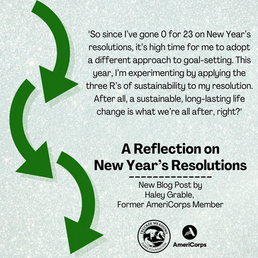Birding at Rosewood Nature Study Area and Other Northern Nevada Birding Updates

Photo by Jennie Johnson
Rosewood Nature Study Area has been open to the public now for nearly one year. However, it has been a stopping point and nesting area for many bird species for many years. The area operated as a public golf course from 1991 to 2015 but has been a wetland habitat in the south-east corridor of Reno, Nevada for possibly hundreds of years. The area is a natural confluence and overflow of many small local water systems like the Boynton Slough, the Truckee River and some drainage ditches. Since the closure of the golf course, The Truckee Meadows Parks Foundation has been rehabilitating the area to its functional wetland habitat. It is quickly becoming one of Northern Nevada's best urban spots for birding.

Photo by Jeff Bleam
Each week, the Wetland Technicians of the nature study area, conduct surveys of the type and number of bird species in the area and the variety and number of birds has been increasing in response to the habitat restoration efforts. One local birder and professional photographer, Jeff Bleam has been capturing some amazing images while birding at Rosewood! In fact, some of the images in this blog post were taken by Jeff. You can visit his galley or website to see more. Plus, we always have binoculars available to borrow at Rosewood and we offer a variety of events and walks to help for anyone interested in learning about birding!

Photo by Jeff Bleam
Some of the bird species spotted at Rosewood recently include Killdeer, American Avocet and Black Crowned Night Heron. More commonly seen are Canadian Geese, American Coots, California Quails, Mourning Doves, Mallards, Red-tailed Hawks, and Double-crested Cormorants. Sometimes, more rarely, you can even spot a Great Egret or Great Blue Heron. Want to help collect data at Rosewood or elsewhere on birds and birding? Your observations will help advance science, inform local bird research, and conservation efforts. We have several ways to keep track of birds you see along your walks at Rosewood by using eBird or iNaturalist. You can observe and enter your sightings online at iNaturalist.org and ebird.org or you can even download their apps! Plus, if you ever see a species that you are unfamiliar with, you can use the Merlin Bird ID app or visit merlin.allaboutbirds.org

Photo by Jeff Bleam
One issue that impacts birding in Northern Nevada is the urban environment. Living in a city can make it challenging to find places to go birding and can also make it challenging for birders to get around. One local organization is trying to help with that. The Lahontan Audubon Society has developed a Birding by Bus plan that locals without transportation can use to find some local birding hotspots.

Photo by Jennie Johnson
Another issue that is affecting Northern Nevada Birding is, unfortunately, the impact of abandoned domestic animals and birds in our local parks. Every year, in Reno and other nearby communities, dozens of domestic animals like turtles, rabbits and, especially ducks and geese are left on their own in local parks and waterways. Domestic birds compete with local wildlife for resources and because they are vulnerable, they can attract predators. Springtime is a popular time for people to purchase bunnies, chicks and ducklings but many people find that these animals can be much more work than they anticipated. Domestic ducks and geese are a common sight in local parks. There are some local resources for anyone wishing to rehome domestic waterfowl like Facebook groups that are dedicated to keeping farm animals in a happy, healthy, farm flock. Additionally, the Lahontan Audubon Society has some resources for sick and injured birds on their website.

Photo by Jennie Johnson
Somewhat related, is the issue of feeding local birds in Northern Nevada. Many birders enjoy providing food and shelter to attract bird species to their homes and yards. This can be an excellent way to observe a variety of bird species, especially for anyone that might be homebound or disabled. It is especially important for home-birders to make sure that they are providing a safe and healthy environment for local birds and the National Audubon Society can be a great resource for what types of feed and feeders are best for all types of birds. Feeding waterfowl at local parks and wetlands is also popular but many geese and ducks, both domestic and wild, are given the wrong types of food by well-meaning bird enthusiasts. Bread and snacks like popcorn are actually very high in salt and sugar and can negatively impact bird species. Peas, greens and oats are healthier alternatives that are also very popular with ducks and geese.

Photo by Jennie Johnson
Interested in learning more about birding at Rosewood Nature Study Area? Visit our website at tmparksfoundation.org to find resources, take a What Type of Bird Are You? Quiz and more! Or, you can stop by and talk with our knowledgeable staff. Our Visitor Center is open 9:00am to 6:00pm, Tuesday through Saturday at 6800 Pembroke Dr, Reno, NV 89502.
Happy Birding!













Comments